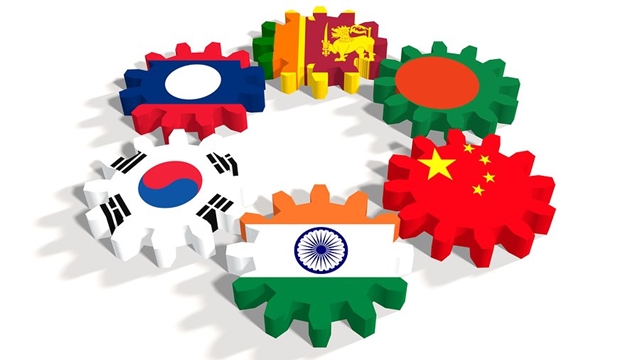SAM
Published:2018-03-31 20:24:19 BdST
APTA opts for 'negative list' in trade facilitation
FT ONLINE
Members of APTA-a major bloc encompassing nearly half of humanity--are considering adopting 'negative list' in tariff preferences to give a nudge to trade in the Asia-Pacific region.
Officials said the grouping members think introduction of negative-list approach instead of the existing 'positive list' method would ensure a productive outcome in the economic cooperation.
The proposed change is under consideration as the positive-list approach could bring little benefit in real terms for the member-countries, they added.
It was found that in most cases the Asia-Pacific Trade Agreement (APTA) member- countries offer tariff concession for products which many others have no real export capacity.
The APTA headquarters has prepared modalities of the fifth round of negotiations and distributed to the members for consideration by the governments' concerned with the adoption of a negative-list approach on top of it.
The issue was also discussed in the 52nd session of the standing committee of APTA recently in Bangkok.
Additional Secretary of the ministry of commerce (MoC) Shafiqul Islam, who attended the meeting, said that with the positive-list approach APTA could not make tangible progress in tariff liberalisation as felt by the member-countries.
"Now we are thinking whether to pursue negative-list approach like many such regional and global trade pacts follow," he said.
Negative-list approach is being seen more effective in tariff-liberalisation process.
According to him the fifth-round negotiation under APTA will start after getting endorsement from the ministerial meeting scheduled for January 2019 in South Korea. Before that the 53rd meeting of the standing committee will be held next September in Bangkok where member-states will express their views about negotiation modalities.
Another senior trade official in Dhaka said in the global context, import duty has gone down to around 10 per cent. If an APTA member agrees to give waiver by 10 per cent on the duty rate, the real benefit stands at 1.0 per cent, which yields little benefit for other member-states.
He also pointed out that the administrative cost of availing benefit under APTA is much higher than the duty waiver the member-states get.
If the negative-list method is followed, a member-state will keep some goods on the negative list and the rest in the majority product lines will remain under zero duty. Thereafter, member-states will negotiate how the negative list could be cut down in phases in order to reach duty-free trade regime, said the official.
As the fourth-round negotiations concluded, the members agreed to provide tariff concession on around 11,000 products from next July. In the fourth round of negotiations Bangladesh agreed to slash tariff for 602 products against third round's 209 products, India 3,381 products from 618, China 2,300 products from 1,858, South Korea 3,757 products from 1,367, Sri Lanka 660 from 217, and Lao PDR 999 products from zero in the third round.
The objectives of the fifth-round negotiations under APTA will be to reduce and eliminate the tariff and non-tariff barriers to substantially all the trades among participating states within a fixed timeframe to strengthen the APTA in view of new developments in the international trading system, to infuse momentum into the process of regional economic cooperation in the Asia-Pacific region, and to facilitate new membership to APTA which can further enhance South-South cooperation as envisaged in the 2030 agenda for sustainable development.
The fifth-phase negotiations are likely to set target to reduce and eliminate tariffs on substantially all trades covering at least 80 per cent of total national tariff lines and bilateral import value for the base years 2014-2016. It may also consider adopting zero-for-zero tariff for selected products, among others.
As one of the oldest preferential trade agreements among countries in the Asia-Pacific region, the APTA pact occupies market for 2.921 billion people. The size of APTA market accounted for US$14,616 billion in terms of gross domestic product (GDP) in the fiscal year 2015-2016.
Its main objective is to hasten economic development among the six participating states opting for trade-and investment-liberalisation measures which will contribute to the intra-regional trade.
Unauthorized use or reproduction of The Finance Today content for commercial purposes is strictly prohibited.


